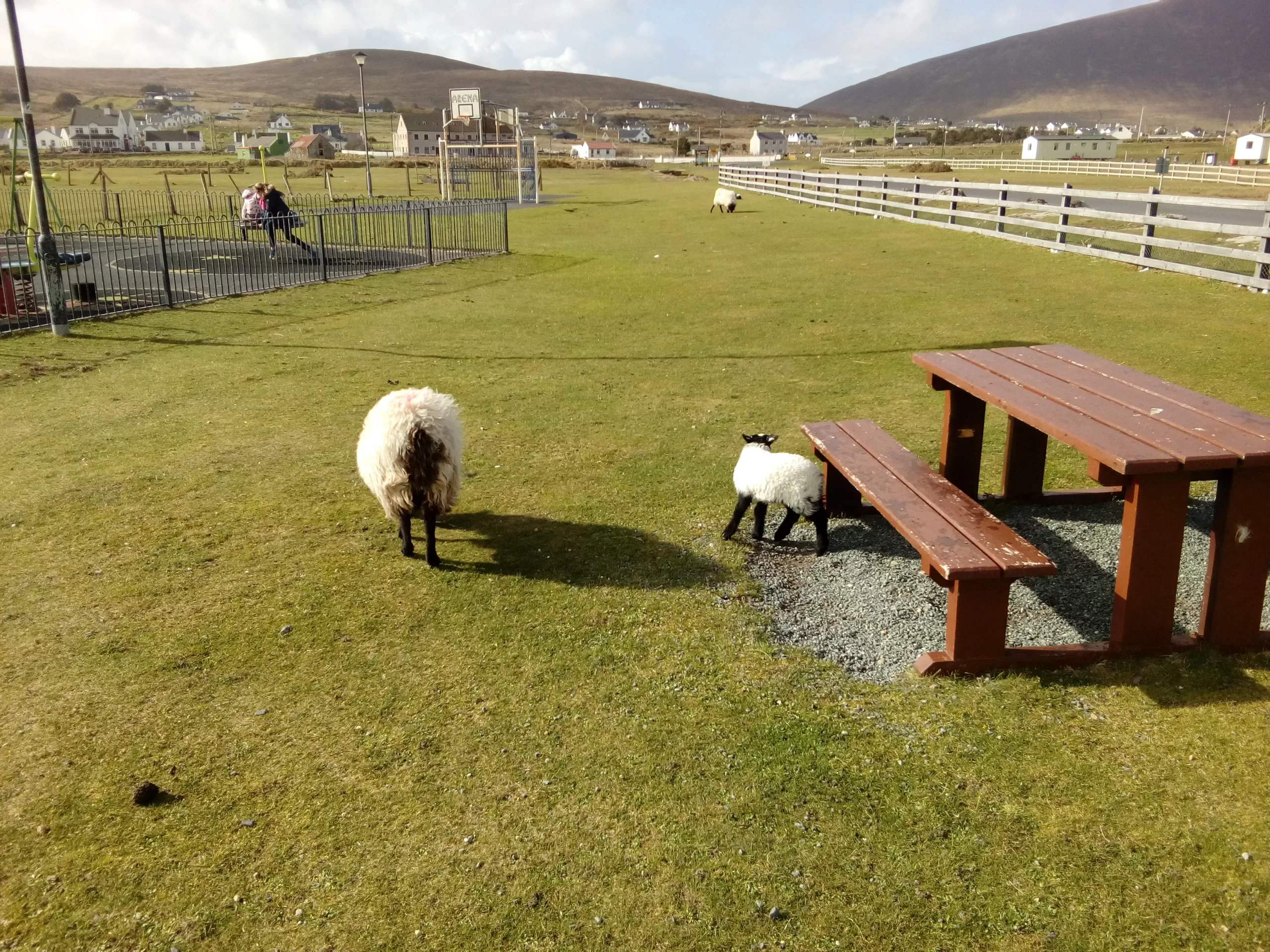My parents packed their bags and came to visit me on what they termed their “once in a lifetime trip.” Being farmers, their opportunity to travel locally was limited, let alone to Europe. When I asked them what they wanted to see, they simply replied that it didn’t matter—it was up to me to decide. Organizing a once-in-a-lifetime trip did not come without pressure. Nonetheless, I picked them up at the bus station and began my brief tenure as a tour guide.
My housemate, after giving them a cup of tea (Irish hospitality), asked if they were going to visit any farms while they were in Ireland.
“The last thing I want to see while on vacation is cows,” my father assured him.
I gave my parents my room, warning them beforehand that their accommodation wasn’t going to be The Carlton. The back patio was overgrown with weeds, the fence had rotted and collapsed, and the second-floor shower was leaking into the ceiling below—a typical rented house in Galway. I tried to anticipate my father’s question of why we didn’t fix things by explaining the passive-aggressive nature of rental agencies in a landlord’s market, and how they try to frustrate tenants into doing the work for them. “Plus,” I said. “If the house looked nice they would charge us more.”
On way to the Cliffs of Moher, a typical tourist destination, we drove through The Burren, a vast rocky landscape with karst features known for having unique flora and fauna. I pulled into a parking lot of the Poulnabrone dolmen, next to the paddock of a few Charolaise that looked over the gate and chewed lazily. The Poulnabrone dolmen is an ancient “portal tomb” used by the Neolithic elite between 4200 BC and 2900 BC. It was composed out of giant slabs of rock over a 30-foot cairn and had contained the remains of 33 people. “It’s hard to imagine going back that far in time,” I said to my parents. “It’s amazing, really.” However, when I turned, they weren’t there.
They were standing by the fence, marvelling at the beef. “Ryan, do you think the limestone makes the grass better here? Is that why they’re so big?”
One of the first evenings we were watching Bloodline in the living room when my father snuck away quietly. A minute later we heard a scream upstairs and the sound of something crashing to the ground. “Oh yeah, watch out for the toilet seat,” I told my mother. “It has a tendency to slip off.”
My mother wanted to see the town where her father grew up in Kochendorf, Germany, so we flew to the continent and I took them on a four-day trek across the country. It was good to use my German again, which was painfully acquired in forced conversations with bus drivers and bratwurst venders when I lived there. On the way to Kochendorf we stopped in Heidelberg, a charming city celebrated by Mark Twain, among others. I brought them to the Heidelberg Castle, a 12th-century landmark high upon the Königstuhl hillside overlooking the Neckar River. Throughout history it had been the residence of counts and kings, captured and loss in various conflicts, and tied into Germany’s past in various ways. In addition to its own picturesque architecture it offers a stunning view of the entire river valley.
“Would you look at that,” my mother remarked as we stood on the balcony.
“I know, you can see for miles,” I said.
“There’s two Herefords below us,” she said. “Instead of mowing the bank of the castle, they pasture it out.”
“German efficiency,” my father said.
There were tourists below us taking pictures of the castle. All of their photos will show everyone on the balcony looking out at the historic city of Heidelberg…except two people looking down at beef cattle.
A few days before my parents were due to leave we were again watching Bloodline, resting after a day of travel. During the middle of the episode my father leans over to me. “They probably have a toilet seat in the local hardware store. If they didn’t, hell, I could mail you one.”
After their ten-day expedition the folks returned to the US, still using the term “trip of a lifetime,” which I took to be a good sign. It tends to make an impression on a person the first time they realize that there are whole other ways of doing things than what one is familiar with, from food to architecture to mannerisms. My mother was pleased to visit the birth town her father and to accidentally find a memorial to her great uncle who was lost at sea during World War II. My father was happy to get a rest from the walking required in a city with poor public transport. And in addition to the memories, they came away with pictures of many historical landmarks that happened to be next to the cows they were photographing.
This article is part of The Milk House column series, published in print across three countries and two languages. It can also be found at themilkhouse.org.
This article appeared in a similar form in Progressive Dairyman.


